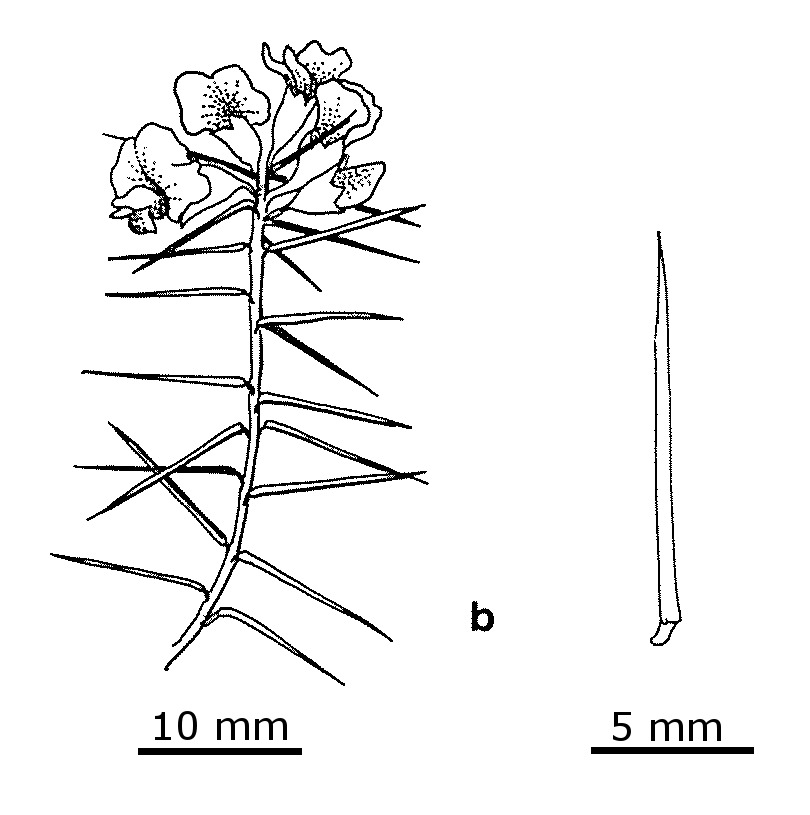Dillwynia sieberi
Steud. Sieber's Parrot-peaErect, spreading shrub, 1–2 m tall; stems appressed-pubescent, raraly with longer diverging hairs. Leaves linear, 7–20 mm long, c. 0.4–0.8 mm wide, moderately crowded, spreading, rarely some reflexed, trigonous, usually glabrous, apex acuminate and pungent; petiole yellowish, 0.4–1.2 mm long. Flowers in terminal and upper-axillary, 2–10-fiowered racemes; pedicel c. 3 mm long. Calyx 3–5 mm long, hairy, lower lobes sometimes minutely pungent, much shorter than tube; petals persistent after anthesis; standard 5.5–9 mm long, notched, yellow; wings slightly shorter, obovate, yellow; keel shortest, obtuse, red. Pod ovoid, c. 5–6 mm long, c. 4 mm wide, almost glabrous or sparsely covered with long hairs; seeds 1 or 2. Flowers Sep.–Nov.
HSF. Also Qld, NSW. A rare species in Victoria where known only from the Macalister and Avon River watersheds where it grows on dry ridges and slopes in poor skeletal soils.
Long included in D. juniperina (at least in Victoria), but distinguished by the shortly, but distinctly, petiolate leaves and the normally appressed pubescence of new growth (Albrecht & Crisp 1993).
Jeanes, J.A. (1996). Fabaceae. In: Walsh, N.G.; Entwisle, T.J., Flora of Victoria Vol. 3, Dicotyledons Winteraceae to Myrtaceae, pp. 663–829. Inkata Press, Melbourne.
 Spinning
SpinningAlbrecht, D.E.; Crisp, M.D. (1993). Dillwynia sieberi distinguished from D. juniperina (Fabaceae: Mirbelieae) in south-eastern Australia.. *Muelleria * 8(1): 47–50.

